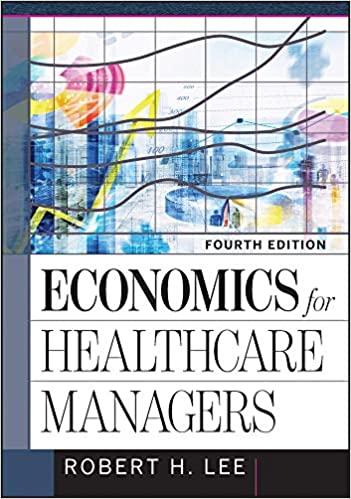The Affordable Care Act (ACA) has increased the share of the population with health insurance. Most of
Question:
The Affordable Care Act (ACA) has increased the share of the population with health insurance. Most of the newly insured are young and reasonably healthy. As a result, the ACA will primarily affect the demand for primary care services, and many anticipate a shortage of primary care physicians (Porter 2015).
But some other observers suggest that this concern is overblown (Auerbach et al. 2013). The production of primary care is changing in ways that shift its supply. One change is the rapid expansion of patient-centered medical homes, which emphasize a greater role for technology, nurses, physician assistants, and nurse practitioners. Another change is the growth of nurse-managed clinics (of which MinuteClinic, discussed in case 7.1, is an example). Both of these innovations reduce the number of physicians needed to provide primary care for a population.
Discussion Questions
• If there were a shortage of primary care physicians, what would happen to their incomes?
• Set up a model of the demand and supply for primary care physicians. (It should have salary on the vertical axis and number of primary care physicians on the horizontal axis.) Assuming that the production of primary care does not change (i.e., the supply curve does not shift), how do you expect the market equilibrium to change?
• How have the incomes of primary care physicians changed in the last few years? Are these changes consistent with your prediction? (You can get income data from Medscape Physician Compensation Reports.)
• Do the changes in the incomes of primary care physicians suggest there is a shortage?
• If retail clinics and patient-centered medical homes continue to expand, how will they affect the market equilibrium? Which curve would shift as a result: demand or supply?
• Deductibles have been rising quickly in recent years. How would that affect the incomes of primary care physicians?
• Patient-centered medical homes typically expand the roles of registered nurses. How would this affect the demand for primary care physicians?
• The ACA increased some payments for primary care. How would this affect the demand for primary care physicians?
Case 7.1
Mentioning a nationwide shortage of primary care providers, millions of patients newly insured through the Affordable Care Act, and an aging population, Andrew Sussman, MD, president of CVS’s MinuteClinic division, said, “Minute- Clinic can help to meet that demand, collaborating with local provider groups, as part of a larger health care team” (Nesi 2014).
MinuteClinic started in 2000 and as of late 2017 had more than 1,000 locations (CVS 2017). Its clinics are staffed by nurse practitioners and physician assistants, rather than physicians. The clinics are open seven days a week and appointments are not needed. The nurse practitioners and physician assistants diagnose, treat, and write prescriptions for a variety of common illnesses. MinuteClinics show customers the prices of care (typically less than the prices in a physician’s office) and usually accept insurance. Most clinics are in CVS pharmacies, although an increasing number are in other sites and some have connections with local health systems.
In late December 2017, CVS Health announced an agreement to buy the health insurer Aetna. Some have suggested that this move could reshape the healthcare industry by integrating insurance with a provider organization (Abelson and Thomas 2017).
Step by Step Answer:






